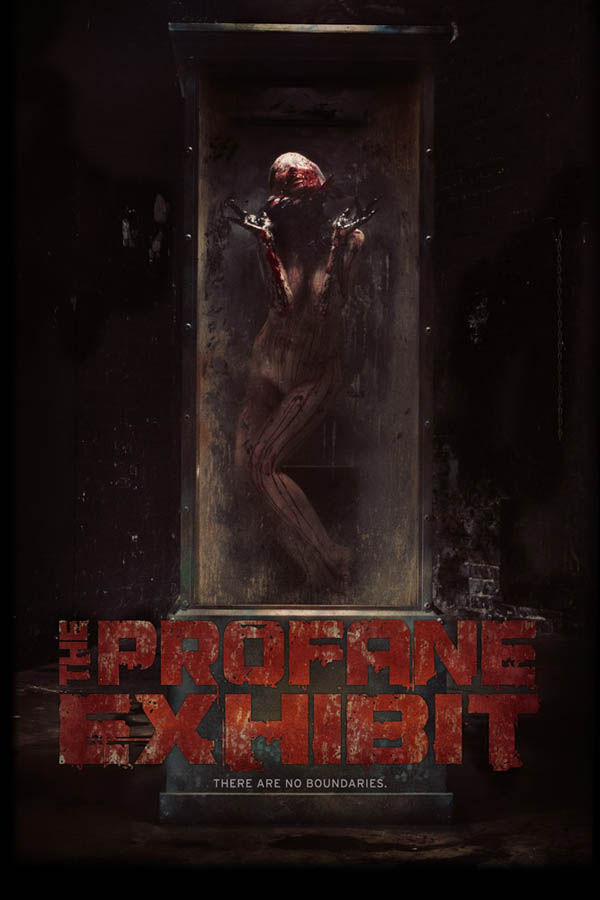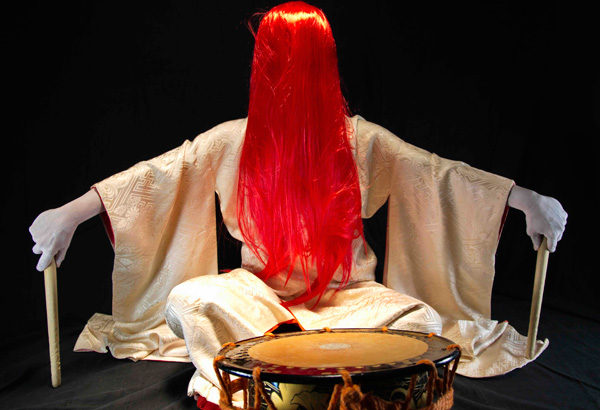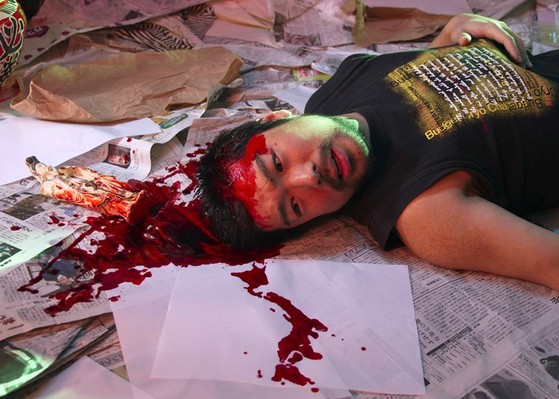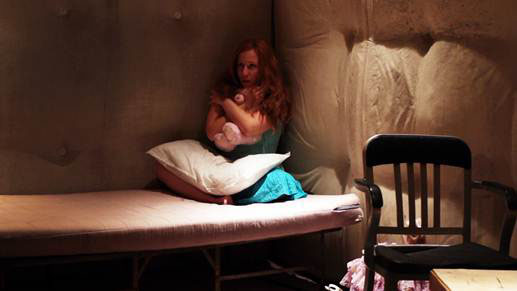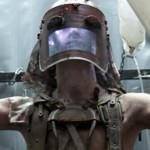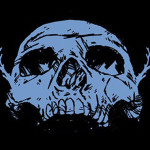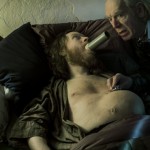THE REBIRTH OF THE HORROR ANTHOLOGY
THE REBIRTH OF THE HORROR ANTHOLOGY
An interview with THE PROFANE EXHIBIT co-writer/producer DAVID BOND
Kier-La Janisse
—————–
The horror anthology. This format for putting as many scares, setpieces and radical ideas as possible into a 90-minute running time has had a rocky history; up until a few years ago it wouldn’t have been considered a safe bet for either audiences or investors. But with The Profane Exhibit, V/H/S, Little Deaths, Theatre Bizarre 1 & 2, The ABCs of Death, The Book of Horror, Chillerama, Paris I Kill You and who knows how many others making waves in the last few years, there is no doubt that the horror anthology is undergoing a serious revival. Like many of the horror anthologies my generation grew up with in the 70s and 80s – from Amicus and Dan Curtis productions to 80s fare such as Creepshow and The Offspring (a personal favourite) – many of these contemporary offerings suffer from equally uneven quality, but audiences just keep clamouring for more. There is of course the talent factor – most of the new anthos are not multiple tales helmed by a single director, but are star-studded affairs (in the genre world, anyway) that have helped mythologize the new crop of horror directors while giving them relatively free rein artistically. Where the anthology once reeked of ripoff, now it smells of opportunity. Sometimes the payoff has been in the act of collaboration itself, in the pleasure of seeing the horror community fuel and feed off its own exciting energy.
While you can certainly expect more on all the upcoming anthologies in future editions of Spectacular Optical, we wanted to take some time out with David Bond, whose brainchild The Profane Exhibit – an anthology featuring 10 extreme horror tales by the likes of Richard Stanley, Ryan Nicholson, Yoshihiro Nishimura, Uwe Boll, Sergio Stivaletti, Michael Todd Schneider and more – has had the horror boards buzzing of late. Bond talks to us about the practicalities of the format, the nature of the project and the nature of the human corruption that inspired it.
—————–
– You are the producer and primary writer of The Profane Exhibit – did you have the segments written and then pursue individual filmmakers who would fit each story, or did you offer a segment to the filmmakers and then script it based on their vision?
We started with a sandbox, then my partner Manda Manuel and I would choose a city, like Pittsburgh, or Capetown, Rome or any of the other cities. Then we created a sound – like Skinny Puppy for Vancouver – then we added a director from that city. We would send them a first draft script, give them one actor of our choosing, score and a budget. The rest was up to them.
– Did the actor you chose have to be the lead, or did they just have to appear in the film in some way? Also regarding the sound – was this sound supposed to influence the tone of the film, or were you looking to get those composers on board to do actual scores for those segments?
The actors in the film just had to be in the film. In “GoodWife”, one of the actors was flown in from New York, just to be a victim. All the composers were giving the script something, even before the director saw it. We have ex members of Marilyn Manson and Nine Inch Nails, The Norwegian black metal band “Mayhem”. We have goth icons. Members of industrial, metal, and goth bands from all over the world , we even have some famous horror composers. The score for each film helps set the feeling of each of the films.
– How were the filmmakers selected? What qualities were you looking for?
We were looking for directors that truly understood the nature of corruption. All the directors had created iconic cult films.
– How much input do you have with each segment once they are in production? Have you been on set for every shoot?
Manda and I have been very hands on as producers. It helps when you have a great editor like Jeremy Kasten and an amazing scriptwriter in Scott Swan of Masters of Horror fame. We try to make it to as many sets as possible, but we are self-financed, so we have to rely a great deal on our teams. It comes down to trusting in the skill and artistry of the directors that we have chosen.
– The rich people sitting in the secret ‘Room of Souls’ in the nightclub, each telling a story of depravity, reminds me of a horror version of The Decameron. In The Decameron their stories are licentious and debaucherous, and the storytellers could be seen as callous because they are wealthy people participating in this leisurely activity while the Black Death is killing thousands all around them. But this storytelling circle is a means escapism to shield themselves from the horrors of the plague. This might seem like a stretch, but was this an influence at all?
The idea started with Salo. Each person tells a story on how they have explored the concept of corruption in their lives.[i]
– ‘Corruption’ is a word that comes up a lot here – how would you define it and what is its purpose? Richard Stanley for instance, strikes me as a very spiritual person, so his concept of ‘corruption’ might be different from what people assume based on the term. I assume for Richard corruption would be something ultimately transcendent.
In the modern world everyone is corrupted, and it is done so easily, it happens every day. Corruption is as natural as birth and death, ashes to ashes and all that. We are born, we live, we die and our bodies are corrupted, rotting in the earth – in turn giving sustenance to new life, new ideas and experiences. Ultimately though, it is up to each director to define their concept of corruption in the course of their segment. Richard deals with the world of the conflict material ‘coltan’, which is used in every cell phone in the world – meaning everyone has blood on their hands because they have to have the latest cell phones.
– When you were thinking of what you wanted to occur in these stories, what kinds of images were going through your head? What kind of social function does it serve to seek to expose the profane, to confront people with ‘unspeakable atrocities’?
I started with the nature of the viral video – two girls one cup, lemon party, and 3 guys one hammer. When I grew up we had Cannibal Holocaust. So what happens if you have some of the most iconic directors explore these images in the internet age? I have always believed that the audience is ‘the profane exhibit’; in “Coltan” it’s our need for a new iPhone that allows atrocities of that sort to happen in Africa. The film starts with small acts of corruption and moves till it’s the whole world that’s corrupted. Like in “Viral”, our need to watch, to comment, which is so much a part of our society today.
– Tell me a bit about Chad Michael Ward’s provocative poster art for the film. Did he come up with the concept?
Chad and I talked for a few weeks, then I asked him to create the best image he had ever done. Something even better than his Pain Box series.
– The anthology film – specifically the horror anthology –has a turbulent history that, only 5 years ago, might have scared off investors. But in the last few years, specifically since Little Deaths, we’ve seen an incredible amount of activity in this area. What happened?
I think Trick ‘r Treat really changed how we saw the anthology. It proved that a major studio could market and profit from a DVD release. Our goal with Profane is to build on that.
– There is a lot of interplay between the participants on these various anthologies – Simon Rumley had work in Little Deaths and does again in ABCs of Death, Richard Stanley did Theatre Bizarre and is now doing The Profane Exhibit – do you think there is a stronger community now that has helped the format in terms of cross-promotion?
You have to remember, we are the ‘fight club’ of the horror world. Last January when we shot the first segment, no one was really talking about anthologies. I simply chose the people who best spoke to me about the project. If you are going to do a film about Africa, there is really only one African-born director that suits the project. As for community….It is definitely getting stronger, but it has a ways to go before it is as tight-knit as say…the horror writing community of the late 80’s.
Can you elaborate?
Until recently, horror has always had a cyclical nature, where interest in it has waxed and waned. With the advent of the internet, self publishing and independent films, horror has kept a constant presence and the market place hasn’t collapsed like it did before. When we were starting our magazine, the fiction writing community readily embraced us and helped us out in so many ways in the early 90’s. It didn’t matter who you talked to, they were there to help. There was no sense of ‘I’m doing my thing and to hell with you’. It’s the same way with Profane; we’ve received a lot of help and interest, people are excited and want to be a part of it. But, saying that, there is still a bit of competition and with all of the new people getting into the genre, trust needs to be built. Perhaps an organization, club or association can be built to bring all of the disparate groups together. Much like Horror Writers of America did for the writing community for a brief time in the 80’s.
– What are your own favourite horror anthologies?
I love the Amicus films, and I hope it shows through in our wraparound segment “Rue des Martyrs”.
[i] In a way, this is a link to The Decameron. Pasolini adapted Boccaccio’s Decameron as the first film in his ‘Trilogy of Life’, and then created Salo as a response to the way these films were exploited as bawdy fare for the popolo. Salo’s structure is also inspired in part by Boccaccio’s text.

 April 1, 2012
April 1, 2012  No Comments
No Comments
